With ‘Terrier’ No. 32670 being withdrawn from service at the end of the year, Geoff Silcock reminisces about the 12 consecutive days in August that saw two of the class rostered for more than 500 miles of timetabled running.
No. 3 Bodiam has been on the Rother Valley/Kent & East Sussex Railway (KESR) since 1901, latterly running as No. 32670, but will be withdrawn active at the end of 2016. For the last few years the KESR has incorporated two unmanned ‘ghost stations’ not included in the current timetable.
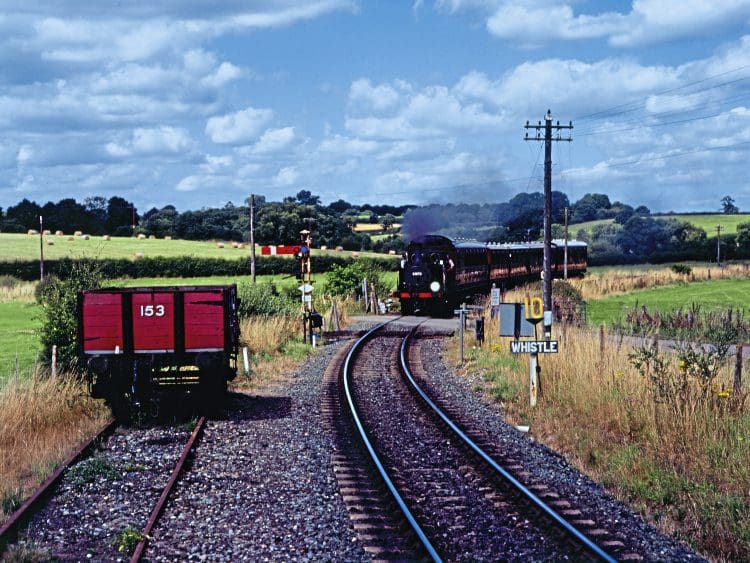
When the yearly sabbatical to the South Coast was again mooted for the start of August, there seemed little chance that the two native KESR BR-liveried ‘Rooters’ would be rostered again for passenger duties towards the start of the main August holiday season workings.
But how wrong I was…
Enjoy more Heritage Railway reading in the four-weekly magazine.
Click here to subscribe & save.
The upgrading of the dynamic duo’s capabilities, as unburdened in HR last year by yours truly, had provided several extra days of operation towards early August 2015, with both of the 1872 and 1880 thoroughbreds working separately.
However, nothing this time had quite prepared me for the 12 days that they would work turn and turn about ‘rooting’ with the KESR vintage set of coaches, which include the South Eastern & Chatham Railway Birdcage brake and special bogie saloon, and nearly equalling their maximum tonnage consist up the 1-in-50 Tenterden Bank.
The duo’s statistics this summer, with
No. 32670’s imminent demise due, have become even more formidable. Together they have now spent 193 of their collective 280 years associated with the line, with more than a quarter of that time in preservation from withdrawal, and 56 years of those from the formation of the latter-day KESR.
Seasoned crews…
The final two days of operation on August 5/6 – the 11.45am and 2.20pm departures from Tenterden Town, before a more powerful engine took over for the rest of the month – were particularly memorable, and undertaken by the great survivor No. 32670, aka No. 3 Bodiam, with more than able gritty performances ‘rooting’ through the Rother Valley.
Many of these came from the younger and now seasoned crews, with the Class 3 maximum tonnage, bunker-first, up the final 1-in-50 climb from Rolvenden, made the more formidable sometimes from a standing start at the beginning of Orpins Curve.
On occasion the second man on the footplate and then the guard were needed to open and close the gates on the A28 road for their passage through, before the climb up to Tenterden Town station could begin in earnest.
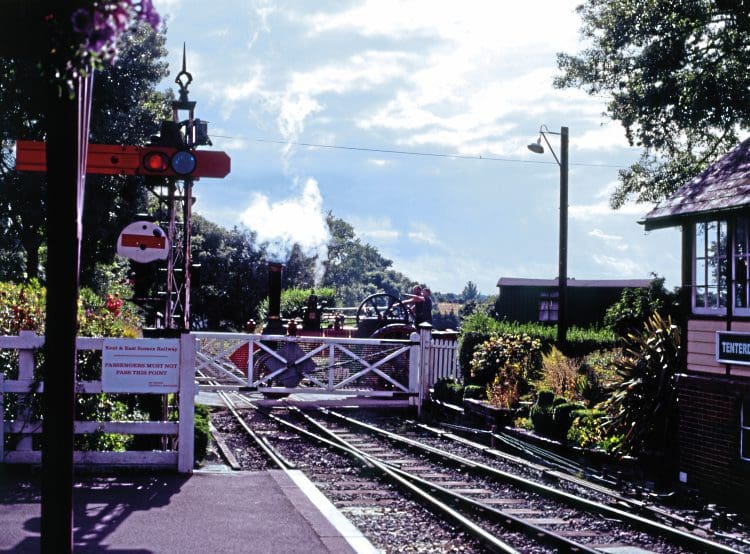
Seen from this dyed-in-the-wool photographic assassin’s point of view, No. 32670 has presented an exquisite challenge, as it still faced downhill out of Tenterden Town, unlike No. 32678 on the service trains into the high summer.
However, the opportunity was taken to clear some of the intruding foliage on the idyllic vistas that presented themselves, plus arriving sometimes at 6.30am to groom my 144-year-old canine quarry’s black-lined out coat on shed before its working day started….
Overseas visitors…
The KESR receives an appreciative trickle of enthusiasts from all over the world, and these visitors among others could normally be found each day by the train engine awaiting its departure from Tenterden Town.
A couple from New Zealand for instance, and several individuals from Canada and the USA were present on the penultimate day of ‘Rooter’ operation in August, and were absolutely enthralled that they had not only seen, but also been hauled by the great survivor from 190s – No. 32670 – and conveyed to the magical distant Bodiam Castle in a choice selection of Victorian and Edwardian coaches.
…And this on a truly timeless English summer day, through increasing fields of wavering golden wheat by the lineside nowadays, and in concert with the delicate chaffs of ‘Rooter’-borne cotton wool clouds blown across an azure blue sky along the Rother Valley.
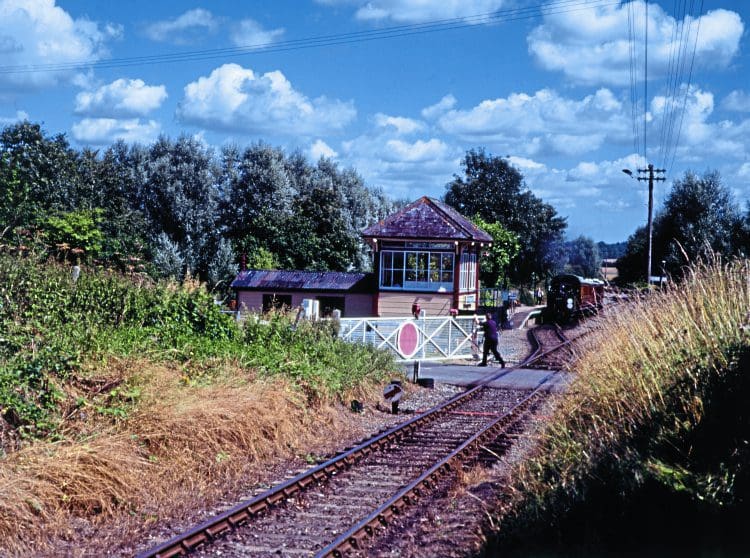
On the KESR ‘home front’, of the crews that I spoke to over several of the working ‘Terrier’ running days, most conceded that No. 32678, the slightly more youthful of the two by eight years, was the more able ‘up the hill’ nowadays, which I recall indicates a change from previous years.
‘Ghost Stations…’
The latter-day KESR also possesses two ‘ghost stations that do not appear in the public timetable. The first is at Rolvenden, with the present day locomotive facilities, maintenance workshops, and in recent times also the new carriage shed situated nearby.
The second is further to the west at Wittersham Road, which, being a single platform situated on a passing loop, is usually only accessed by trains bound for Northiam and Bodiam in one direction when the
two-train service is in operation.
Into the autumn, both locomotives together were on hand on some Sundays to head the prestigious ‘Wealden Pullman’ on its extended trip to Bodiam and return, which included empty stock movements. On October 22 they were on call together for the scheduled two round trips, before No. 32670, from 1901, is finally taken out of traffic for overhaul at the end of December 2016.
Early days
It was on my first meaningful visit to the latter-day Kent & East Sussex Railway in the early 1970s, before the line officially opened in that direction from Rolvenden in 1974, that there stood the great survivor Stroudley ‘Terrier’ 0-6-0T No. 3 Bodiam next to the Rolvenden station and shed area.
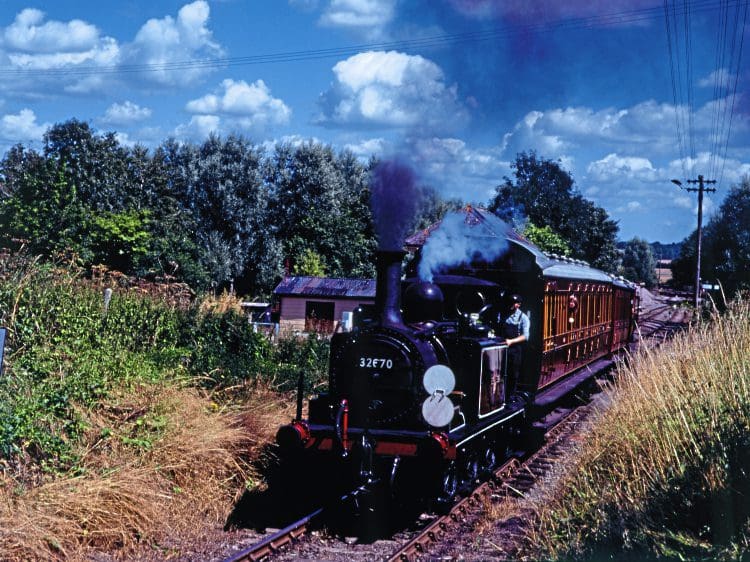
It stood at the head of three loaded old engineers’ wagons, with an equally ancient London & North Western guards van at the rear, and it was during the vigorous bunker-first departure from the station confines to the distant railhead close to Gaysdown Wood and the now disused crayfish beds that the cows grazing nearby to the shed were scattered from their lethargy, which may have been viewed as in true light railway style.
It was my initial introduction to the diminutive beasts, which has continued on the resurrected line over the years with the ‘Terriers’, though I still prefer the older and countrified term of ‘Rooters’ for them.
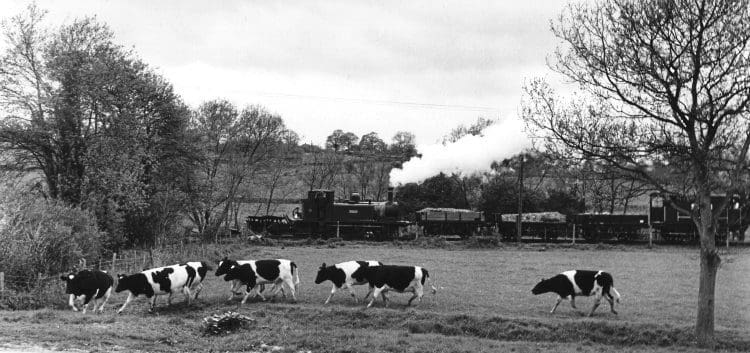
I have found myself allied to their cause on a number of occasions now, and of course the line itself has grown through the intervening years to an increased maturity, and will continue to do so with the future railhead at Robertsbridge in prospect.
Help and encouragement
I should like to sincerely thank the gentlefolk at the latter-day Kent & East Sussex Railway for their individual and collective help and encouragement in that time, and specifically recently when recording the swansong of No. 32670 on its last ‘Indian Summer’ before withdrawal from service, and hopefully for a quick turnaround overhaul, as certainly befits its stature in light railway history.
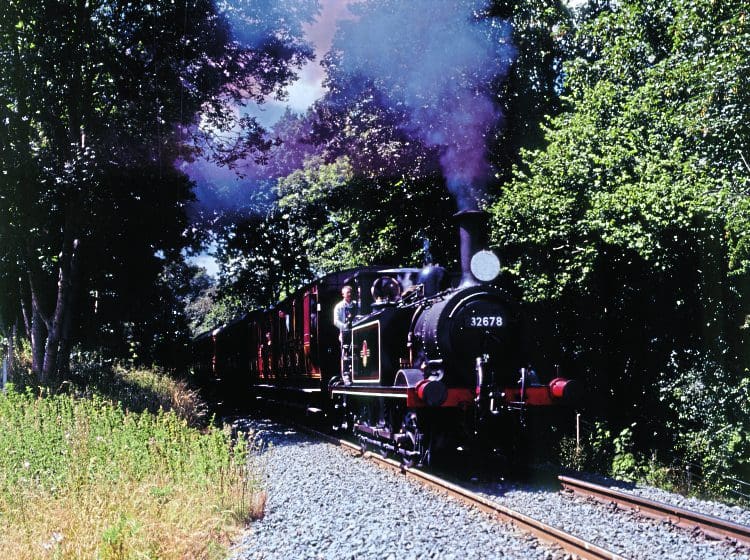
It doesn’t seem so long ago now that after an eventful day at the KESR into high summer, I was returning in the early evening near the border of the Kent and East Sussex coastlines, and from literally out of the blue, I observed two Spitfire fighter aircraft flying alongside the English Channel at Camber Sands, which provided a truly memorable moment before they merged into the golden distance all too soon.
I was reminded of the Terrier Trust’s Hugh Nightingale and his analogy of the two Terrier Trust locomotives at the KESR almost being akin to those iconic flying machines; perfectly formed in their element, they both form part of our truly forever England.
Most people call them Terriers
On the Kesser they could be Rooters,
You can tell them apart by their friendly bark;
… And even the sound of their hooters. GS
Read more News and Features in Issue 237 of HR – on sale now!
Archive enquiries to: Jane Skayman on 01507 529423 – [email protected]
Advert
 Enjoy more Heritage Railway reading in the four-weekly magazine. Click here to subscribe.
Enjoy more Heritage Railway reading in the four-weekly magazine. Click here to subscribe.




